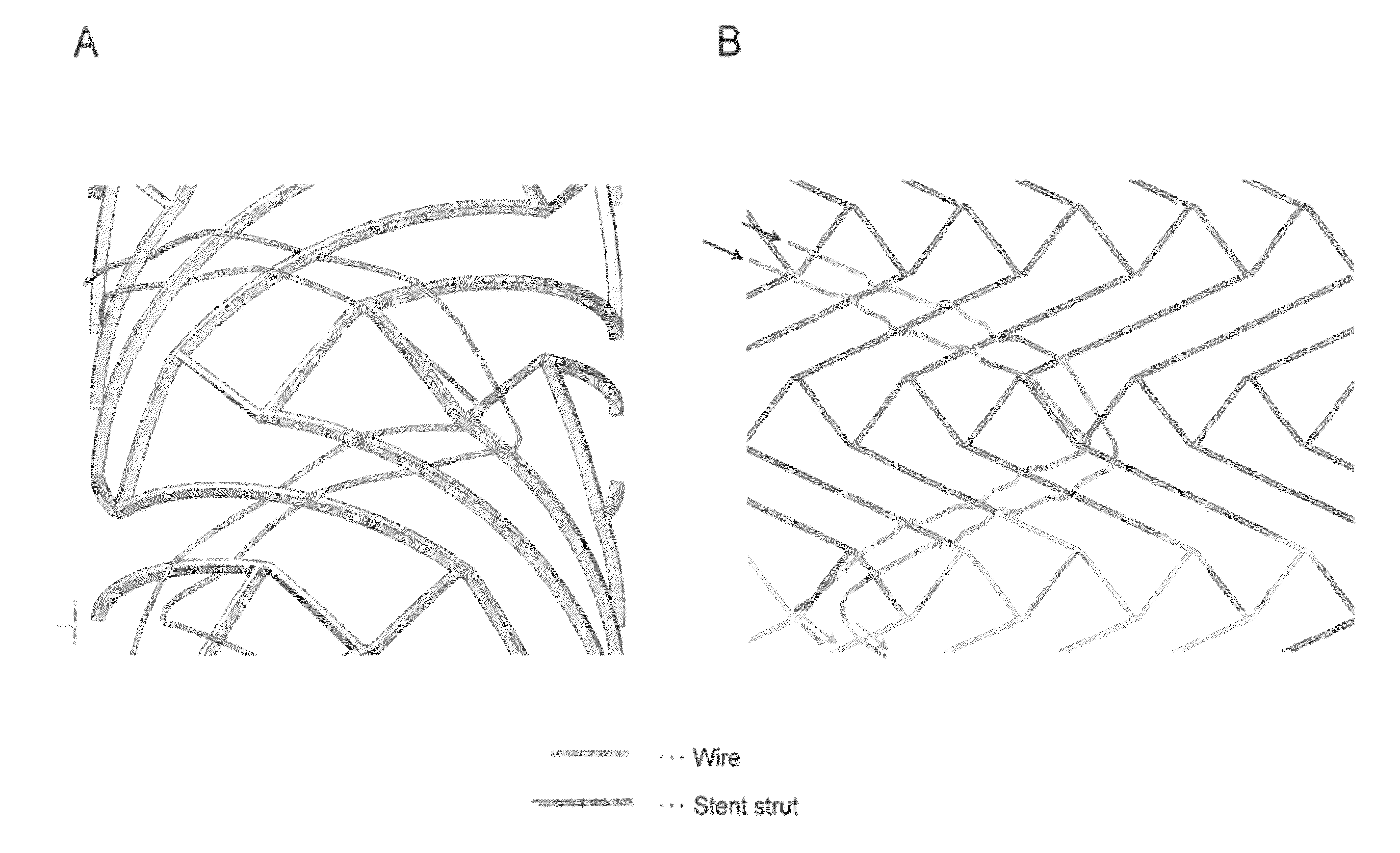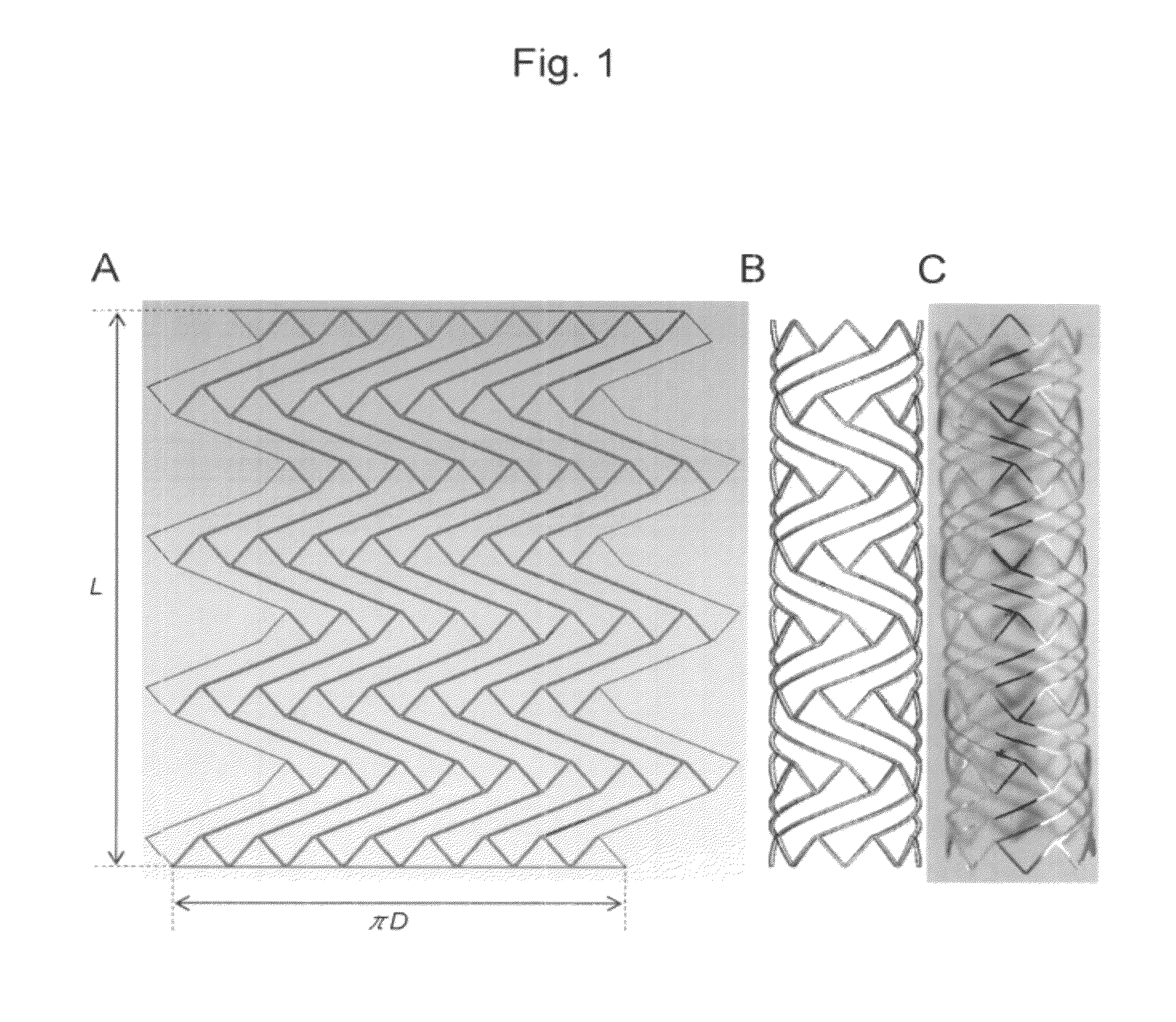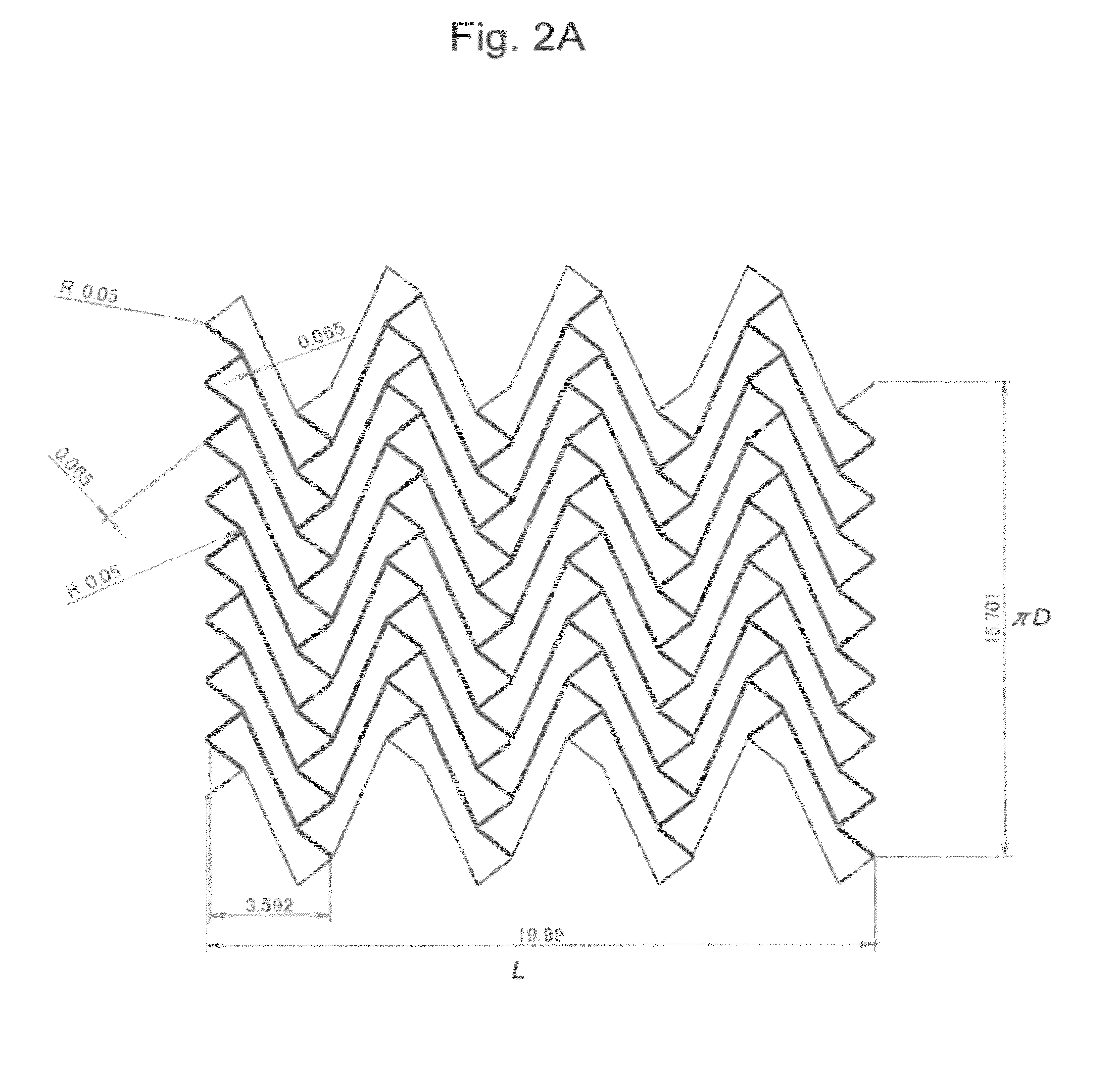Stent to be used in tubular organ in vivo
a tubular organ and stent technology, applied in the field of stents, can solve the problems of high mortality rate, complex tubular structure, and inability to adapt to the structure of complex structures, and achieve excellent mechanical flexibility and design freedom
- Summary
- Abstract
- Description
- Claims
- Application Information
AI Technical Summary
Benefits of technology
Problems solved by technology
Method used
Image
Examples
example 1
Preparation of and Property Test for Tubular Stent
3DCAD Stent Model
[0124]In this example, a stent model having a closed-cell structure was designed on the basis of Pythagorean tessellation theory. This theory was employed because the mesh pattern of the stent having the closed-cell structure is composed so that it is filled with cells all having the same shape. According to the Pythagorean tessellation theory, the only geometrical shapes that can planarly fill a plane are quadrangles and hexagons (to be precise, triangles are also included).
[0125]A real-shape 3DCAD stent model was created using Solid Edge (SIEMENS PLM Software). Thereafter, the model was imported in IGES format into Pro / ENGINEER (Parametric Technology Corporation) and Rhinoceros (Robert McNeel & Associates) so that the surface model could be modified. A finite element model was then created with Marc. Mentat finite element software (MSC Software).
[0126]Mesh patterns with 3 types of closed cell structure were devised...
example 2
Preparation of and Property Test for Hybrid Stent Braided with Wires
[0155]The tubular stent model 6 in Example 1 was braided with wires. The stent was composed of an Ni—Ti tube and the diameter, length, thickness, and wire width of the tube were 5.0 mm, 20 mm, 0.115 mm, and 0.065 mm, respectively. These were 7 cells in the longitudinal direction and 8 cells in the circumferential direction. Wire made of a nickel titanium alloy having a diameter of 39 μm and a length of 30 cm was used. As shown in FIG. 29, a wire was inserted into a cell (which is located near the center of the stent in the longitudinal direction) from the outside to the inside of the stent and then the wire was guided to move outside from the inside of the stent via the adjacent cell so that it crossed the strut forming the cell. Through repetition of this procedure, the stent was braided with wires so that the wires crossed the stent struts alternately. At such time, braiding was performed so that wires obliquely e...
PUM
 Login to View More
Login to View More Abstract
Description
Claims
Application Information
 Login to View More
Login to View More - R&D
- Intellectual Property
- Life Sciences
- Materials
- Tech Scout
- Unparalleled Data Quality
- Higher Quality Content
- 60% Fewer Hallucinations
Browse by: Latest US Patents, China's latest patents, Technical Efficacy Thesaurus, Application Domain, Technology Topic, Popular Technical Reports.
© 2025 PatSnap. All rights reserved.Legal|Privacy policy|Modern Slavery Act Transparency Statement|Sitemap|About US| Contact US: help@patsnap.com



